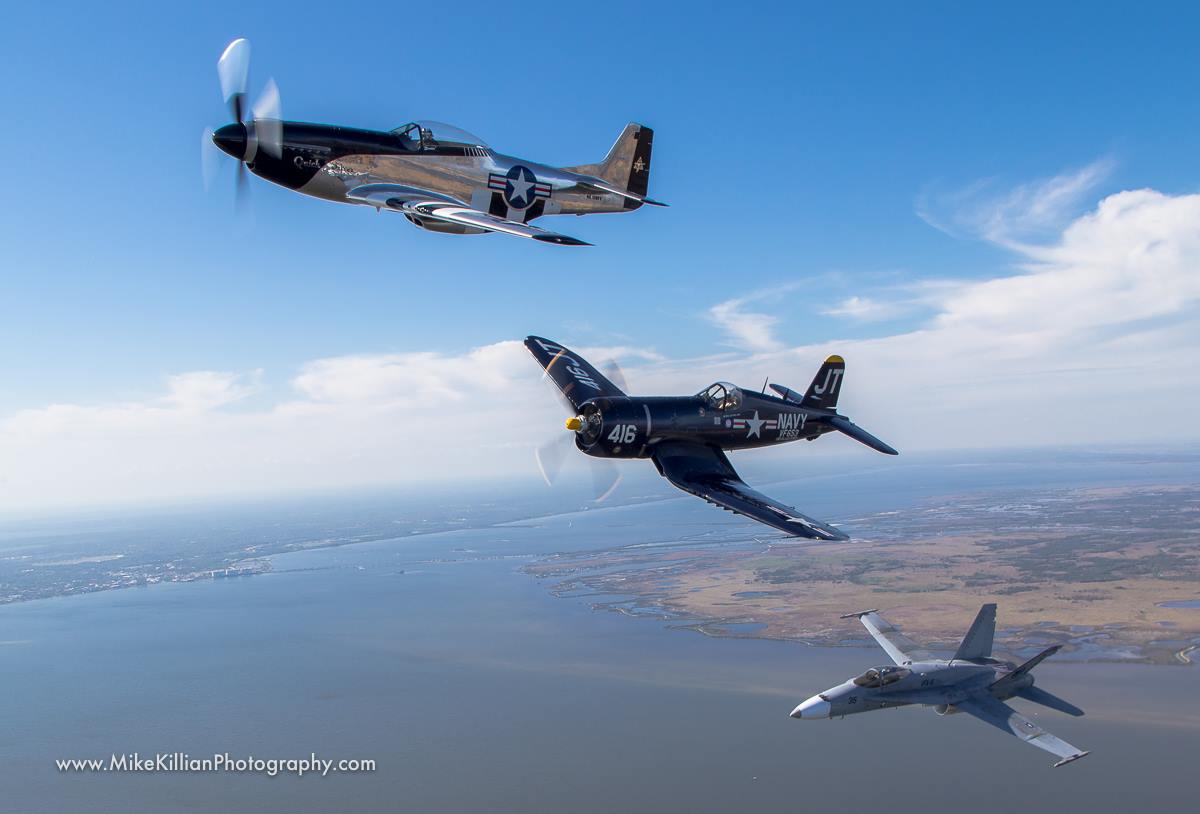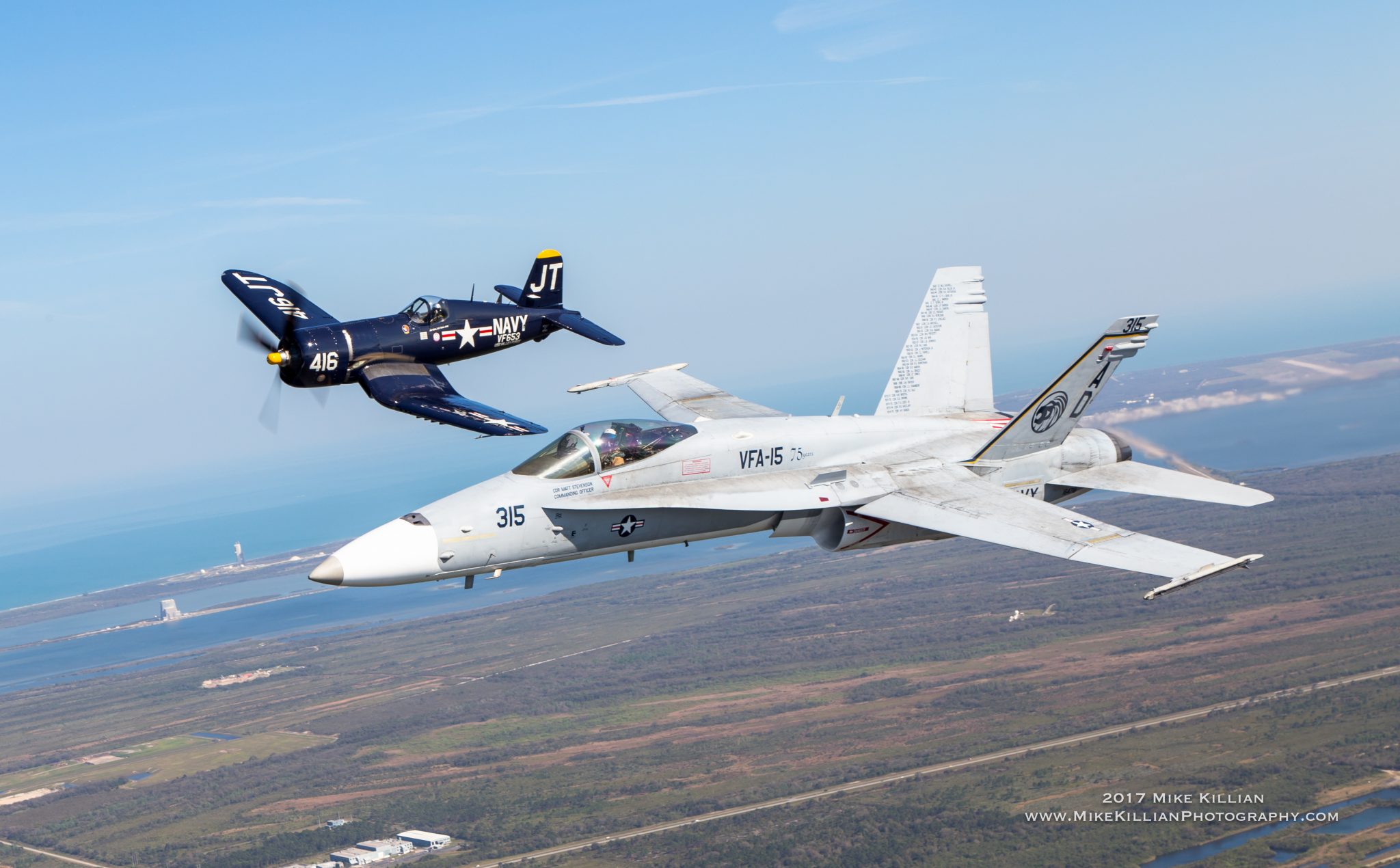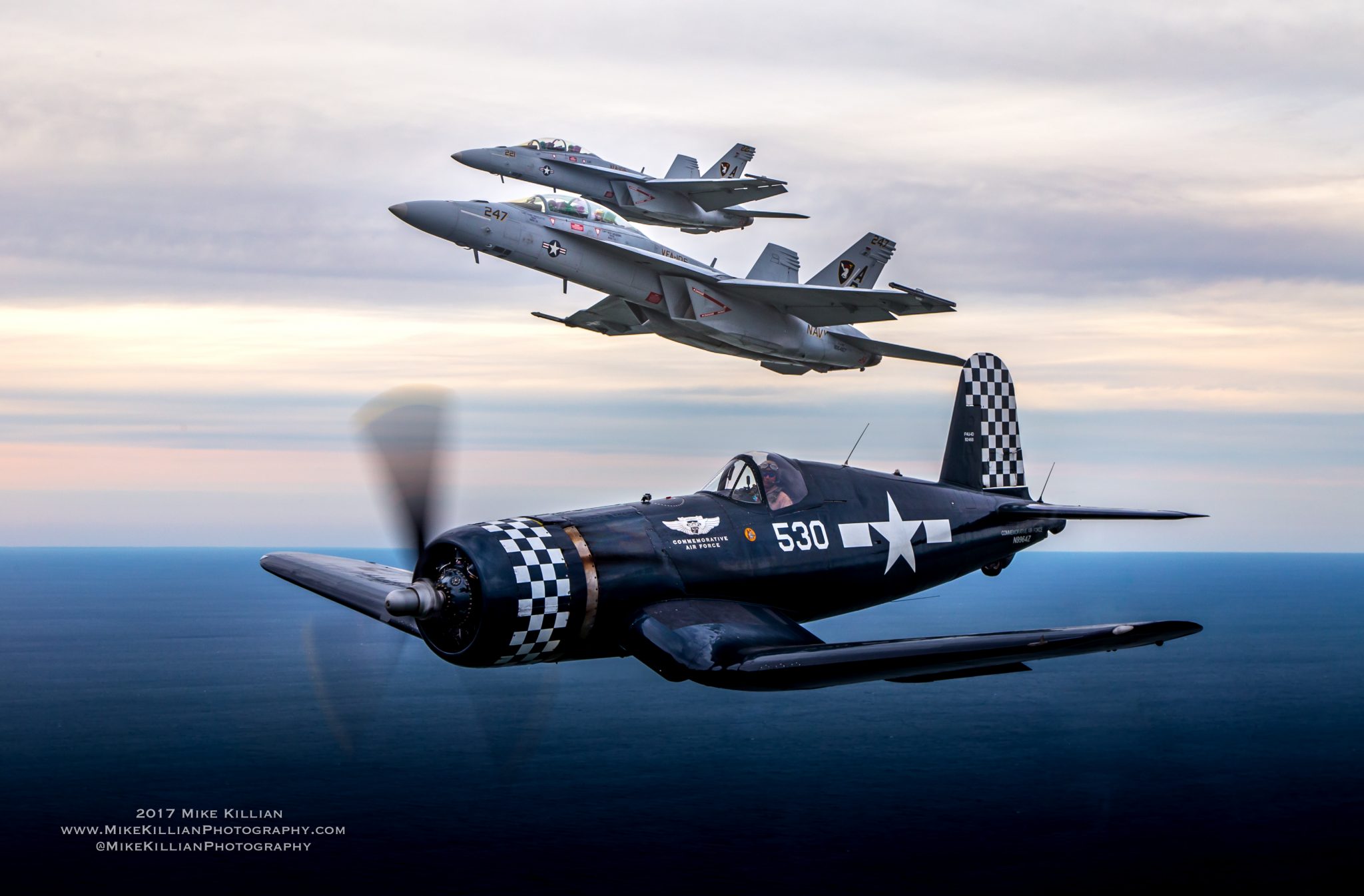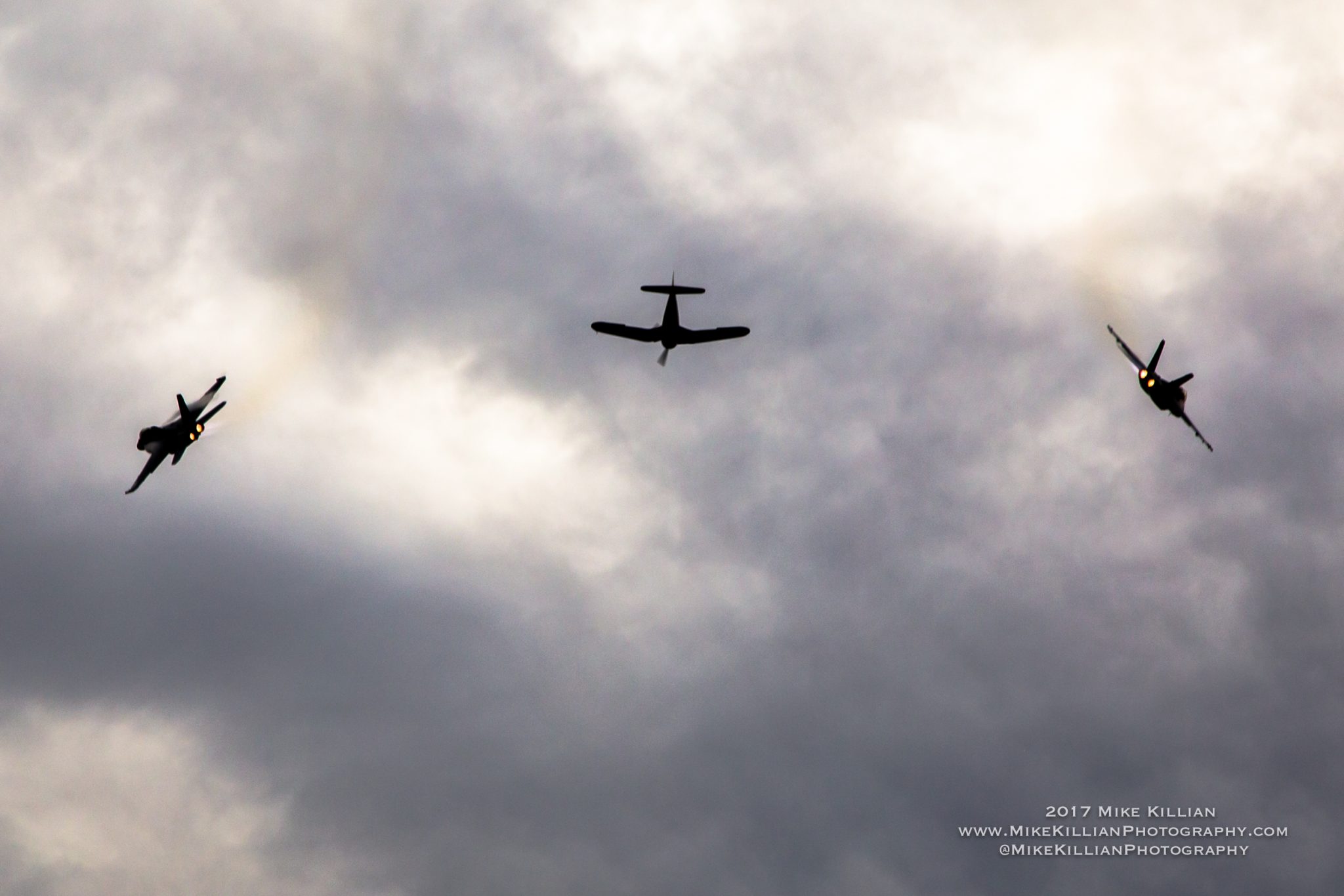One of the most popular sights at any air show was always Heritage and Legacy flights, with military aviation past and present joining in the sky in symbolic formation spanning generations from WWII, Korea and Vietnam.
The Air Force accomplishes this with their Heritage program. The Navy used to do so with a Legacy program too, but they stopped several years ago. And they will remain stopped until the air show community helps, or the Navy decides to pay for it.
[youtube id=”9jjMHQVYTU4″ width=”800″ height=”454″ position=”left”]
For 15-20 minutes at various show sites each year, the Navy’s single ship F-18 Hornet and Super Hornet Tactical Demonstration teams from Strike Fighter Squadrons VFA-122 and VFA-106 shred the skies for spectators and show off some of the various capabilities of the jet and the men and women who crew them.
But from time to time, in past years at least, they were joined at the end of their demos by old Navy warbirds for something called a “Naval Aviation Tailhook Legacy Flight”, where the past and present of Naval aviation would come together in the sky.

But in recent years, the Navy Legacy flights have virtually vanished due to budget issues, and therefore are not officially back on air show rosters yet. The formations, however, are still flown on case by case basis on rare occasions, the most recent being at the Cleveland National Air Show Sep 2-4 when TAC DEMO took a hint from the Air Force Heritage Flights and wanted to fly some Legacy passes with the CAF Dixie Wing Corsair also performing at the show, and so they secured the necessary approvals to do it.
Although the Navy funds the training and execution of the active duty demos, due to the fiscal situation dating back to sequestration in 2013 they are currently unable to provide funding for the civilian side of the program.

Matter of fact, the TAC DEMO pilots in Cleveland weren’t even aware there used to be an official Legacy program, which speaks volumes to the length of the time Legacy flights have now been grounded.
I’ve had the honor to work with the Navy TAC DEMO team on two Legacy shoots this year, in an effort to promote the shows and teams, and bring attention to returning Legacy flights back to the show circuit. Both the Navy and civilian warbird crews have been very supportive, but needs the community as a whole to come together the same.
For the program to return, warbird crews must train with the active duty TAC DEMO flight crews on each TAC DEMO team prior to the start of the air show season, but to accomplish this the warbird aircraft and their crews need to transit to either NAS Lemoore in California (VFA-122 Demo Team), or NAS Oceana in Virginia (VFA-106 Demo Team).

The costs to do so, and transit these warbirds and their Legacy trained crews to select TAC DEMO show sites to fly the Legacy Demos, is expected to cost at minimum $300,000 annually.
For this reason, the Navy Tailhook Legacy Flight Foundation (NTLFF) was established in 2015, to raise the funding necessary to accomplish Tailhook Legacy training and then execute Tailhook Legacy flights at all the air shows on the TAC DEMO team’s schedule.
“Although TACDEMO has been able to come back, the Legacy funding has not. We had training scheduled for 2016, but it was cancelled about a week prior due to flight hour funding issues,” says Bernie Conaway, President/Director of Operations at the Navy Tailhook Legacy Flight Foundation.
[youtube id=”_1mgY8c9b28″ width=”800″ height=”454″ position=”left”]
“Your support will provide the funding to fly these aircraft to training, and once training is complete, your support will provide for moving these warbirds to each show. Unlike the Air Force Heritage Flight Foundation, we’re not funded by a billionaire, we are Navy verterans who are trying to bring the program back,” added Conaway.
“Without support, the program will remain grounded and these majestic formation flights will not grace the skies,” he adds.
From the NTLFF mission statement:
“The Foundation will be the backbone of the civilian part of the program to ensure Navy Tailhook Legacy Flights can continue with or without DoD augments. Flying vintage aircraft is a resource-consuming endeavor, which requires considerable funding to enable aircraft to transit to/from air shows and other aerial events (i.e. Presidential Memorial flyover). Many vintage aircraft are maintained and operated by non-profit organizations or private individuals at significant cost to the sponsor(s). NTLFF will provide air show booking services, liaison services and cover the cost of flying warbird aircraft to/from events.

In addition to supporting the Navy warbird community, NTLFF will promote the history of Naval Aviation and the rich traditions that have carried it through the years. Through the use of electronic media, NTLFF will provide access to information on the various events, aircrew, personnel and aircraft that are part of the rich tradition of Naval Aviation and will feature information about the aircraft and pilots who perform the Navy Tailhook Legacy Flight.”
Such flights memorialize the rich history of those who came before, promote the tradition and legacy of Naval Aviation and support the efforts of the Navy in attracting and recruiting quality applicants to serve in Naval Aviation.
After all, air shows are, without question, the single biggest recruiting tool for the U.S. military, so it would seem beneficial to bring these Legacy flights back, and soon. Not only that, but they can prove very beneficial to the non-profit museums and organizations who maintain and operate the warbirds as well, which are true living pieces of aviation history.

For more information on the grassroots civilian non-profit NTLFF organization, and to donate, please visit https://www.ntlff.org.
Don’t forget to LIKE them on Facebook too, https://www.facebook.com/NTLFF/.
With the support of the aviation community these powerfully symbolic Legacy flights can soon return.
.
– Follow Mike Killian on Instagram and Facebook, @MikeKillianPhotography
.
